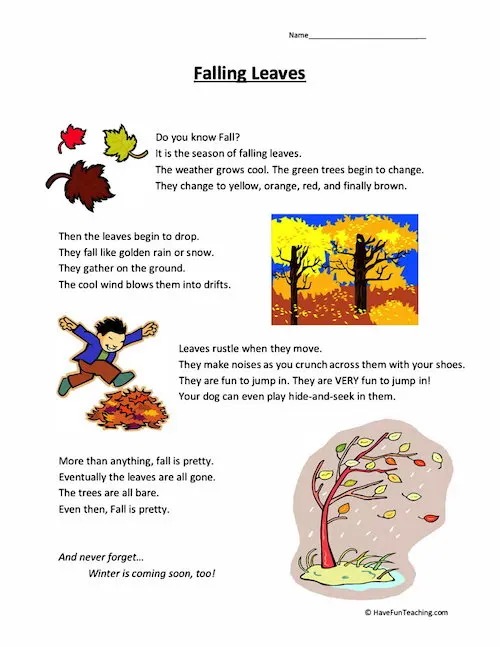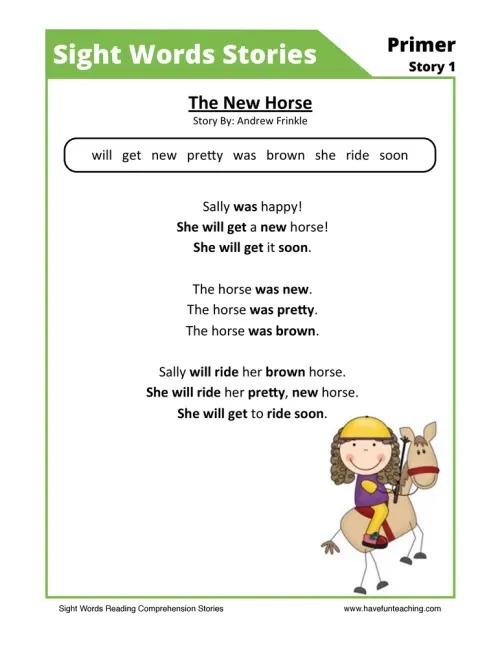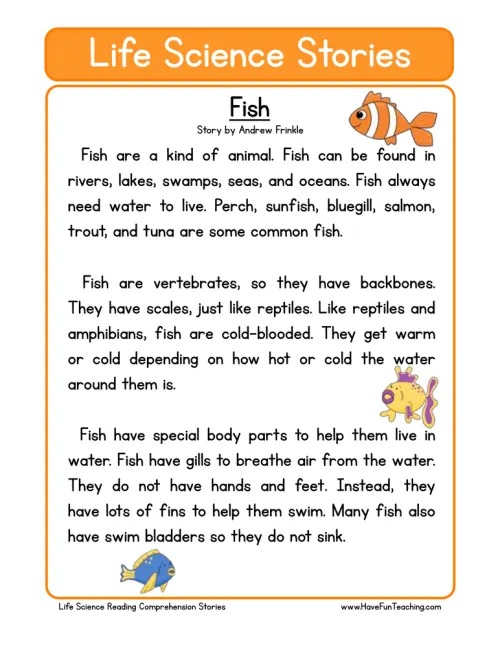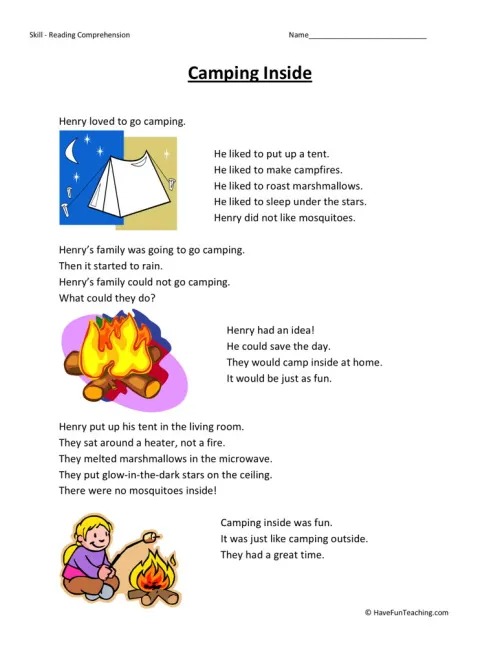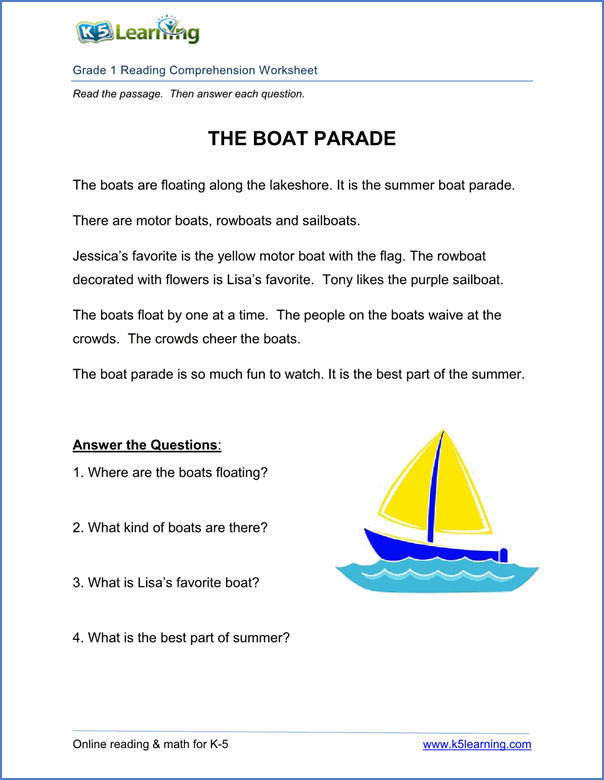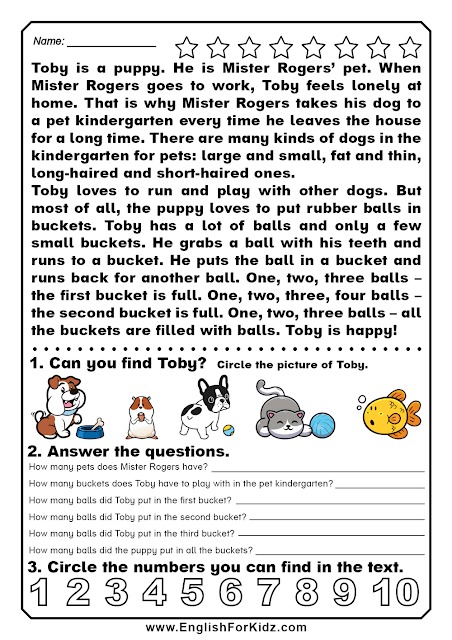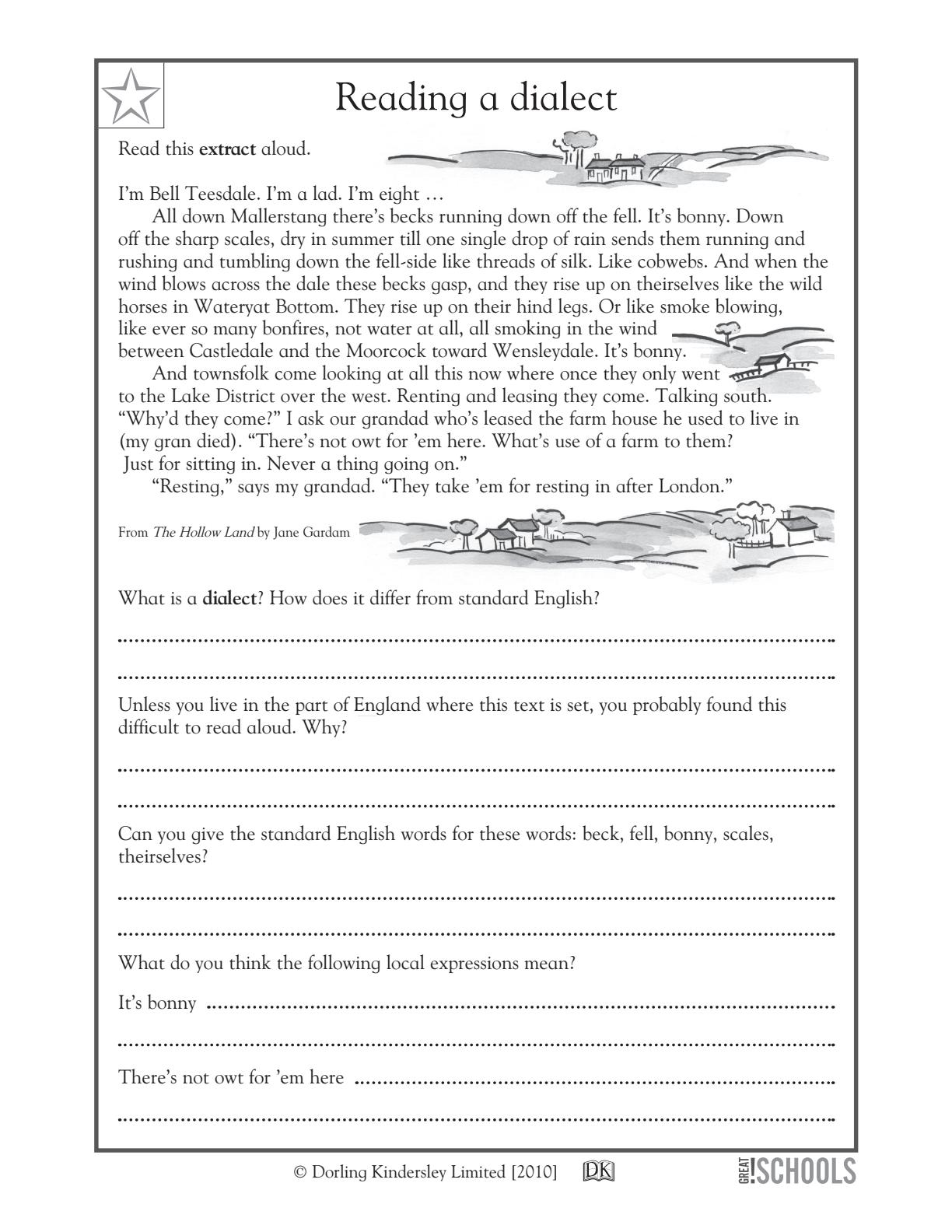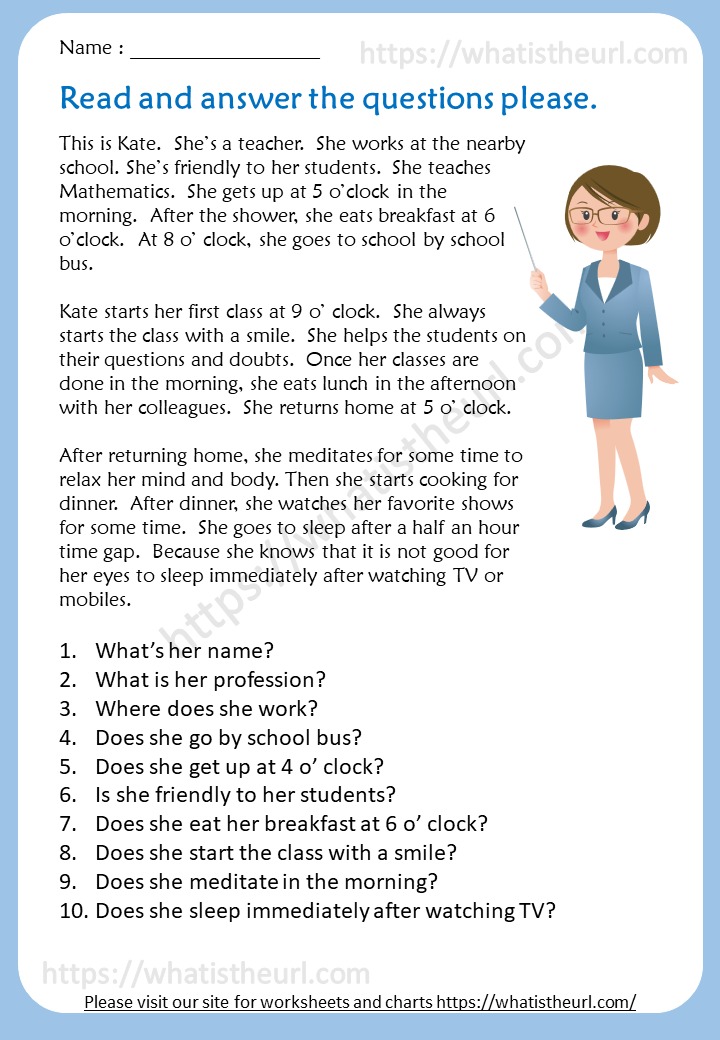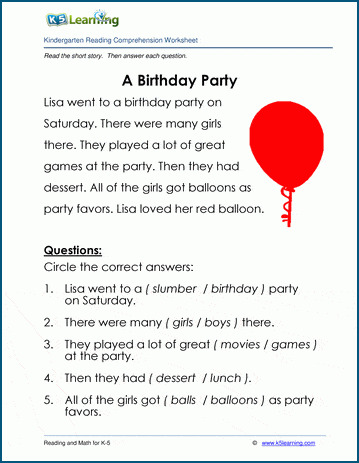As a literacy teacher, you understand the importance of providing students with engaging content, such as reading comprehension worksheets. You spend countless hours working diligently on strategic teaching methods for improving your students’ critical reading comprehension skills.
Some of the challenges teachers face In preparing their literacy lessons are changes in classroom reading standards and the development of computer-based readers. These make the process of comprehension instruction overwhelming.
Sometimes, getting back to basics provides students with information-processing skills for progress in reading comprehension. Fun reading comprehension worksheets are tried and true strategies for focusing children on the reading comprehension process.

If you’re wondering which reading comprehension worksheets to incorporate into your daily teaching framework, we can help you. Read more to learn what to look for in worksheets, which ones are the best for supporting students’ comprehension, and where to find them online.
Table of Contents
- The Advantages of Reading Comprehension Worksheets for Different Grade Levels
- Understanding Reading Comprehension Worksheets: A Quick Guide
- Advantages of Using Grade-Level Reading Comprehension Worksheets
- Practical Strategies for Using Reading Comprehension Worksheets for Grade 1 to Grade 6
- Discover Free and Engaging Reading Comprehension Worksheets Online
- The Best Reading Comprehension Worksheets to Reinforce Expressive Fluency
- Crafting Your Own Kindergarten to Grade 6 Reading Worksheets
- Integrating Reading Comprehension Worksheets into Classroom and Homeschool Curriculums
- Conclusion: Enhancing Reading Comprehension and Lifelong Learning
The Advantages of Reading Comprehension Worksheets for Different Grade Levels
From the moment a child picks up their first picture book, a new world unfolds before their eyes—a world brimming with vibrant colors, intriguing sounds, and captivating characters. As they grow older, this world becomes more complex, filled with layers of meaning waiting to be unraveled. This journey into the realm of written text is an integral part of a child’s educational experience, a journey made possible by developing strong reading comprehension skills.
Reading comprehension is the cornerstone of education. It is the bridge that connects students with the knowledge shared in textbooks, the inspiration found in literature, and the ideas exchanged in academic discourse. Without a solid foundation in reading comprehension, students may struggle to keep pace with their grade-level expectations, finding themselves adrift in a sea of words without the necessary skills to navigate effectively.

That’s where reading comprehension worksheets come into play. These invaluable tools help shape and guide a child’s reading journey, reinforcing essential skills while ensuring steady progress. By providing a structured format for students to engage with text, worksheets enable students to dissect complex passages, extract vital information, and comprehend the author’s intent.
From kindergarten to middle school, these worksheets adapt to every grade level, helping students refine their reading skills according to their developmental stage. As students progress, the worksheets become more challenging, incorporating longer reading passages, a wider range of vocabulary, and more intricate comprehension questions. Thus, reading comprehension worksheets serve as an effective scaffold, supporting students’ learning and fostering their ability to comprehend text independently.
In this article, we will delve into the importance of reading comprehension worksheets, how they can benefit both teachers and students, and tips for maximizing their effectiveness. Whether you’re an educator in a bustling classroom or a parent homeschooling your child, this resource aims to shed light on these indispensable tools in the journey towards reading proficiency.
Understanding Reading Comprehension Worksheets: A Quick Guide
A reading comprehension worksheet is a specific type of educational resource designed to help students improve their reading skills. At its core, it is a structured exercise that presents a text passage followed by a series of questions or tasks related to the passage. The objective is for students to read the text, comprehend its content, and respond to the questions accurately, demonstrating their understanding. These worksheets contain several key elements:
The Text Passage:
This is the content that the student is tasked with reading. The passage can range from a single sentence in kindergarten worksheets to lengthy paragraphs or even full pages in middle school worksheets. The complexity of the passage also scales with grade level, incorporating more sophisticated vocabulary and intricate sentence structures as students advance.
Comprehension Questions:
Following the text passage, there are questions designed to assess the student’s understanding. These questions may test various aspects of comprehension, including literal understanding, inference, main idea, and critical thinking. For instance, a question might ask the student to identify a character’s motivation (inference) or summarize the main events of the story (main idea).
Response Format:
The way students are asked to respond to the questions can vary. Some worksheets ask for short written answers, others use a multiple-choice format, and some may even incorporate creative responses like drawing a scene from the story.
Reading comprehension worksheets come in different types, each tailored to a specific grade level. Kindergarten reading comprehension worksheets, for instance, often feature simple, short sentences and use illustrations to provide context. As students move up grade levels, worksheets evolve to include longer passages, complex texts, and more abstract comprehension skills.
- Kindergarten and Grade 1: Worksheets focus on recognizing words, understanding simple sentences, and drawing connections between text and accompanying pictures.
- Grades 2 to 4: Worksheets introduce longer texts, more complex sentence structures, and a wider range of vocabulary. Comprehension questions begin to delve into the realm of inference and the identification of main ideas.
- Grades 5 to 6: Worksheets at this level often feature nonfiction texts, short stories, and chapters from books. Students are expected to demonstrate a deeper understanding of the text, including distinguishing fact from opinion and interpreting characters’ actions and motivations.
- Middle School: Worksheets for middle school students continue to increase in complexity, presenting challenging texts and probing deeper into comprehension skills such as analyzing the author’s purpose and evaluating arguments.
In the following sections, we’ll discuss the benefits of using reading comprehension worksheets and provide practical tips for implementing them in the classroom or at home.

Advantages of Using Grade-Level Reading Comprehension Worksheets
Reading comprehension worksheets offer a range of benefits that can significantly contribute to a student’s learning journey. Here are some key advantages:
Boosting Reading Skills:
Worksheets provide an effective platform for practicing and enhancing reading skills. The structured format helps students focus on the text, improving their ability to extract information and understand the narrative or message. Over time, regular use of these worksheets can result in improved fluency and comprehension.
Developing Critical Thinking:
Beyond basic understanding, many worksheets are designed to foster critical thinking. Questions that require inference, analysis, and evaluation encourage students to go beyond the text and consider underlying themes, character motivations, and the implications of events. This develops critical thinking skills that are invaluable not only in reading but across all areas of learning.
Enhancing Vocabulary:
Reading comprehension worksheets expose students to a broad range of vocabulary. This exposure, coupled with the context provided by the text, aids in vocabulary acquisition. Moreover, encountering new words in different contexts helps students understand nuances in meanings, leading to a richer and more precise vocabulary.
Facilitating Individual Learning Pace:
One of the major advantages of worksheets is the flexibility they offer. Students can work through the exercises at their own pace, allowing for a personalized learning experience. This is especially beneficial for struggling readers who may need more time to decode text and answer questions.
Practical Strategies for Using Reading Comprehension Worksheets for Grade 1 to Grade 6
Using reading comprehension worksheets can be a powerful tool to enhance learning, but their effectiveness can be influenced by how they are implemented. Here are some practical tips for teachers and homeschoolers:
1. Selecting the Right Worksheet: Choose worksheets that are appropriate for your students’ grade level and reading skills. The texts should be engaging and relevant to keep the students interested. They should also offer a balanced mix of literal and inferential questions to develop a wide range of reading skills.
2. Integrating Worksheets into Lesson Plans: Worksheets should not be standalone activities but integrated into broader lesson plans. They can be used as a follow-up to a reading passage or as a prelude to a class discussion. You can also use them to introduce new vocabulary or themes.
3. Encouraging Active Engagement: Encourage students to actively engage with the text. This can include highlighting important parts, noting down new vocabulary, or writing summaries. This not only improves comprehension but also promotes retention of information.
4. Assessing Progress: Use worksheets as a tool to assess students’ progress. Regularly review their answers to identify areas of strength and weakness. This will provide insights into their reading skills and guide future instruction.
Discover Free and Engaging Reading Comprehension Worksheets Online
Venturing into the vast digital landscape in search of reading comprehension worksheets can be quite daunting. Type “reading comprehension worksheets” into your search bar, and you’re met with a staggering number of results. You’ll find a mix of free and paid resources, but sifting through them to find ones that align with your lesson plans can be overwhelming. Narrowing down your search based on grade level and subject can help, but it’s still a considerable task.
That’s where TeachSimple.com comes into the picture, serving as a reliable platform for quality educational resources. But we didn’t stop there; we took the liberty of combing through the internet to find some of the best reading comprehension worksheets available. After extensive searching and reviewing, we are excited to share our top 9 picks with you, all readily available and waiting to be integrated into your next lesson plan
The Best Reading Comprehension Worksheets to Reinforce Expressive Fluency
Grades 1 – 3 Falling Leaves Worksheet By Have Fun Teaching
The colorful images and age-appropriate reading level of this reading comprehension worksheet make it exciting and fun for students. It provides enjoyable reading practice with fun facts about falling leaves.
When children read engaging topics like this, it enhances their reading comprehension. This grade-appropriate worksheet is an asset in any classroom.
K – 2 New Horse Primer Sight Words And Reading Comprehension Worksheet By Have Fun Teaching
As children learn to read with understanding, they need to build their vocabulary. This worksheet focuses on early literacy sight words.
In this entertaining story about a new horse, children learn the meaning of the sight words, and how they’re used in the sentences.
Understanding word meanings is closely related to early readers’ ability to understand text passages. This makes learning new words essential for developing reading comprehension.
You know how complex the reading process is, and how some children struggle with it. Reading comprehension worksheets like this one provide practice to strengthen word understanding.
Grades 4 – 6 Reading Comprehension Worksheet By Have Fun Teaching
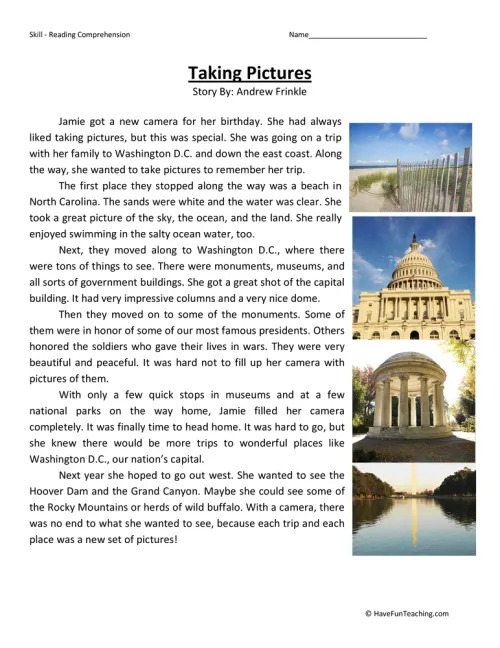
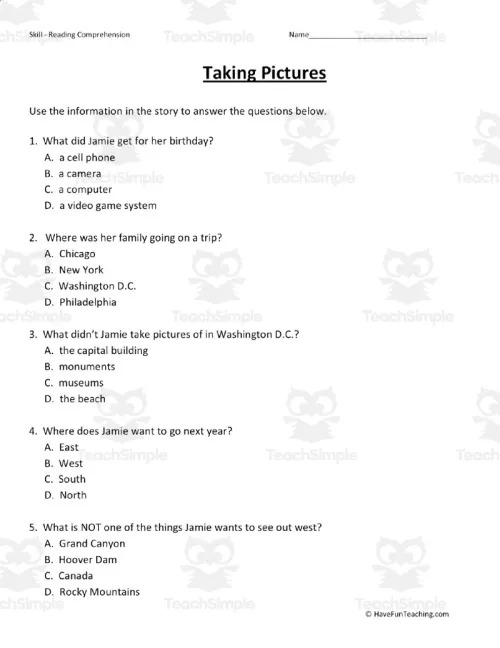
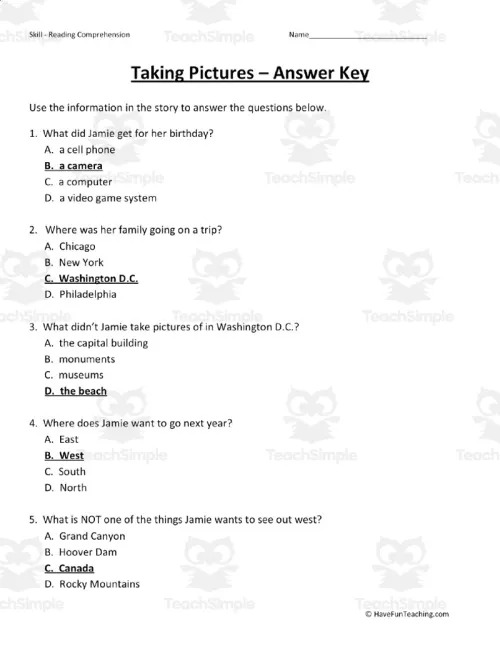
This worksheet includes three pages for reading comprehension practice in grades 4 through 6. It features a story about taking pictures on a family trip. This relevant topic appeals to school-age children, so they enjoy reading.
Once they complete the story, they answer five questions about what they read. This is a valuable tool for assessing their reading comprehension and independent thinking skills.
Grades 1 -3 Life Science Reading Comprehension Worksheet By Have Fun Teaching
Learning about fish and practicing reading comprehension, what could be better than that? This colorful fish story details facts about fish in a fun and engaging way.
This worksheet enhances the enjoyment children derive from stories, which is essential for motivating reading and practicing their developing reading comprehension skills.
As children read this story, they link information about fish together in the content. This is a critical skill for successful reading comprehension.
Grades 1 – 3 Camping Inside Reading Comprehension Worksheet By Have Fun Teaching
Henry, the main character in this worksheet story, enjoys camping. As the story continues, children read about Henry’s likes and dislikes. The story also depicts problem-solving ideas.
Reading comprehension is the goal of this worksheet, strengthening children’s decoding words and sentences. These skills help them understand what’s happening in the story, and the more motivation they have for reading.
This reading comprehension worksheet develops and sustains students’ reading enjoyment, which supports comprehension.
Grades 1 – 2 Boat Parade Reading Comprehension Worksheet From K5 Learning
This reading comprehension worksheet for first and second-graders features an engaging story about a boat parade. After reading the story, there are four questions that assess reading comprehension.
Teaching students to develop skilled reading is complex and requires educators to provide multiple activity resources to their students. This teaches thinking, memory, focus, and comprehension.
This worksheet introduces early readers to analyzing text and its meaning.
Grades 1 – 3 Reading Comprehension And Numbers Worksheet From English For Kidz
With its colorful graphics and entertaining story about puppies, this worksheet gets early readers excited. It teaches comprehension and number skills.
After the children read the story, they answer six related questions. This allows them to self-assess their comprehension. They also have to identify the numbers mentioned in the story.
Grade 5 Reading Comprehension In Dialect By Great Schools
This unique worksheet introduces dialects to fifth-grade students. The dialect used in the story fascinates children and builds vocabulary. It also strengthens thinking skills as they compare and contrast the dialect vocabulary.
Children enjoy the challenge of deciphering the dialect while trying to understand the story.
Grade 5 Reading Comprehension With Questions From Your Home Teacher
The story in this worksheet talks about a day in the life of a teacher. This topic fascinates children. After reading the story, there are 10 questions that test students’ reading comprehension.
This instructional worksheet offers reading comprehension practice that promotes content literacy.
Grades 1 – 2 Birthday-Themed Reading Comprehension Worksheet From K5 Learning
Developed for first and second-graders, the birthday theme of this reading comprehension worksheet is a winner with children. They read the birthday story and then answer five questions about the story.
This simple reading comprehension worksheet gives children practice reading easy sentences, which promotes confidence. The questions offer a way to assess their understanding of the text.
Crafting Your Own Kindergarten to Grade 6 Reading Worksheets
While there are ample resources available to find pre-made worksheets, there might be times when creating your own reading comprehension worksheets is more beneficial. This allows you to customize the material based on your students’ needs, interests, and the learning objectives you’re focusing on. Here are some tips on how to create effective reading comprehension worksheets:
- Choosing the Right Text or Passage: The first step in creating a worksheet is to select an appropriate text. This could be a short story, a news article, or a nonfiction passage, depending on your curriculum and the grade level you’re teaching. Be sure to choose a text that is engaging and suitable for your students’ reading level.
- Crafting Questions to Test Comprehension: Once you have your text, the next step is to craft questions that test your students’ understanding of the text. These questions could be about the main idea, details, inference, critical thinking, and the like. Remember, the goal is not just to test if the student can read the text, but also if they can comprehend it.
- Incorporating Vocabulary Exercises: Vocabulary is a crucial aspect of reading comprehension. You can include a section in your worksheet to focus on vocabulary found in the passage. This could involve defining words, using them in sentences, or identifying synonyms and antonyms.
- Ensuring Alignment with Grade Level and Learning Objectives: When creating your worksheet, it’s important to align it with the specific grade level and learning objectives you’re targeting. This ensures that the worksheet is not too easy or too difficult for your students and that it helps you achieve your teaching goals.

Creating your own worksheets can be a fulfilling exercise and can help you better cater to your students’ learning needs. In the next section, we’ll discuss how to use these worksheets effectively in the classroom or homeschool setting.
Integrating Reading Comprehension Worksheets into Classroom and Homeschool Curriculums
Now that you have your reading comprehension worksheets, it’s time to implement them in your classroom or homeschool setting. Here are some tips on how to do that effectively:
Introducing the Worksheets: Start by introducing the worksheet to your students. Explain the purpose of the worksheet, what it aims to help them learn, and how they are supposed to complete it. You might also want to walk them through a few questions to ensure they understand how to approach them.
Facilitating Student Engagement with the Text: Encourage students to actively engage with the text. This could involve them annotating the text, discussing it in groups, or sharing their initial thoughts and questions about the text. The goal is to get them to think critically about the text and not just passively read it.
Checking and Giving Feedback on Completed Worksheets: After the students have completed the worksheets, take the time to check their answers and give them feedback. This is an opportunity for you to identify areas where they might be struggling and provide additional support. It also allows you to praise their efforts and progress, which can boost their confidence and motivation.
Adapting and Iterating on Worksheet Use Based on Student Feedback and Performance: Based on your observations and student feedback, you might need to adapt how you use worksheets in your teaching. This could involve adjusting the difficulty level of the text or questions, incorporating more group work, or finding ways to make the worksheets more engaging.
Remember, the goal of using reading comprehension worksheets is not just to improve students’ reading skills, but also to foster a love for reading and learning. In the next section, we’ll discuss some additional resources you can use to enhance your teaching of reading comprehension.

Conclusion: Enhancing Reading Comprehension and Lifelong Learning
As we draw this discussion to a close, it’s essential to reiterate the significance of reading comprehension in a student’s academic journey and lifelong learning. Worksheets play a crucial role in enhancing these skills, offering a structured, engaging, and practical approach to learning.
Remember, as educators, our journey doesn’t end with the implementation of reading comprehension worksheets. We should continuously seek out new strategies, resources, and innovative ways to stimulate our students’ minds. Whether it’s incorporating new texts, trying different question formats, or even introducing other modes of learning such as audio books or interactive online resources, there’s always room for exploration and improvement.
In conclusion, reading comprehension worksheets provide an excellent tool for facilitating students’ reading skills and comprehension. They are versatile, adaptable, and can be tailored to fit various grade levels and learning styles. By harnessing their potential, we can offer our students a more enriching learning experience, sparking curiosity and the desire for knowledge that extends well beyond the classroom.
Remember, every text your students engage with offers an opportunity to broaden their horizons, deepen their understanding, and inspire a love of learning. So, let’s continue to inspire, educate, and shape the minds of our future generations.

